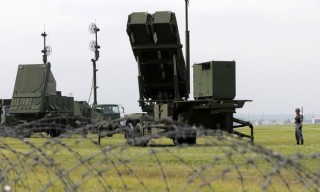Loading
Search
▼ Japan Backs Out Of Costly US Missile System Despite 'Imminent Threat' From North Korea
- Category:Other
Japan has scrapped plans to buy a multibillion-dollar missile defence system from the US that was intended to boost its ability to counter the “serious and imminent” threat posed by North Korea.
Japan’s defence minister, Taro Kono, conceded the land-based Aegis Ashore system would prove too costly and time consuming because it would require a hardware upgrade to ensure booster rockets did not fall on populated areas near host sites.
Japan’s National Security Council on Friday endorsed the cancellation, raising the prospect that Japan could develop a first-strike capability – a move that critics say violates its constitution, which has restricted its military to a strictly defensive role since the end of the second world war.
Kono said Japan would have to scale up its entire defence posture in the face of continuing regional threats to its security. “We couldn’t move forward with this project, but still there are threats from North Korea,” he said in Tokyo this week, adding that the government had been unable to find alternative sites for the missile systems.
He said Japan would consider acquiring weapons able to strike enemy missile launchers.
But any first-strike capability would represent a fundamental shift in Japan’s military posture that could cause concern in other countries in the region.
“I don’t think we are excluding any option before discussions,” Kono said when asked if the ability to strike enemy bases pre-emptively would be on the agenda of the National Security Council.
Donald Trump has not commented on the cancellation, but he has encouraged Japan to buy more military hardware from the US and take more responsibility for its own defence.
The state department said in a statement the US would “continue to work closely with Japan to find a solution to their concerns that enhances our shared security in the face of growing regional threats”.
The government approved in 2017 plans to buy two Aegis Ashore systems to add to its SM-3 guided missiles launched by Aegis-equipped destroyers and Patriot Advanced Capability-3 missiles.
The two units, with an estimated cost of $4.2bn over three decades, were to have covered all of Japan from a station at Yamaguchi in the south and another at Akita in the north.
Tokyo and Washington have already signed a contract worth around 180bn yen ($1.7bn) related to the system, according to the defence ministry. Japan has so far paid 12.5bn yen.
Kono also raised concern about China’s increasingly assertive activity in the region, noting that Chinese coast guard vessels had repeatedly sailed in and out of Japanese waters near the disputed Senkaku islands in the East China Sea.
“China is trying to change the status quo unilaterally in East China Sea, South China Sea and with Indian border and Hong Kong as well,” he said. “It is easy to make the connection between those issues.”
Japan’s defence minister, Taro Kono, conceded the land-based Aegis Ashore system would prove too costly and time consuming because it would require a hardware upgrade to ensure booster rockets did not fall on populated areas near host sites.
Japan’s National Security Council on Friday endorsed the cancellation, raising the prospect that Japan could develop a first-strike capability – a move that critics say violates its constitution, which has restricted its military to a strictly defensive role since the end of the second world war.
Kono said Japan would have to scale up its entire defence posture in the face of continuing regional threats to its security. “We couldn’t move forward with this project, but still there are threats from North Korea,” he said in Tokyo this week, adding that the government had been unable to find alternative sites for the missile systems.
He said Japan would consider acquiring weapons able to strike enemy missile launchers.
But any first-strike capability would represent a fundamental shift in Japan’s military posture that could cause concern in other countries in the region.
“I don’t think we are excluding any option before discussions,” Kono said when asked if the ability to strike enemy bases pre-emptively would be on the agenda of the National Security Council.
Donald Trump has not commented on the cancellation, but he has encouraged Japan to buy more military hardware from the US and take more responsibility for its own defence.
The state department said in a statement the US would “continue to work closely with Japan to find a solution to their concerns that enhances our shared security in the face of growing regional threats”.
The government approved in 2017 plans to buy two Aegis Ashore systems to add to its SM-3 guided missiles launched by Aegis-equipped destroyers and Patriot Advanced Capability-3 missiles.
The two units, with an estimated cost of $4.2bn over three decades, were to have covered all of Japan from a station at Yamaguchi in the south and another at Akita in the north.
Tokyo and Washington have already signed a contract worth around 180bn yen ($1.7bn) related to the system, according to the defence ministry. Japan has so far paid 12.5bn yen.
Kono also raised concern about China’s increasingly assertive activity in the region, noting that Chinese coast guard vessels had repeatedly sailed in and out of Japanese waters near the disputed Senkaku islands in the East China Sea.
“China is trying to change the status quo unilaterally in East China Sea, South China Sea and with Indian border and Hong Kong as well,” he said. “It is easy to make the connection between those issues.”
- June 26, 2020
- Comment (0)
- Trackback(0)


